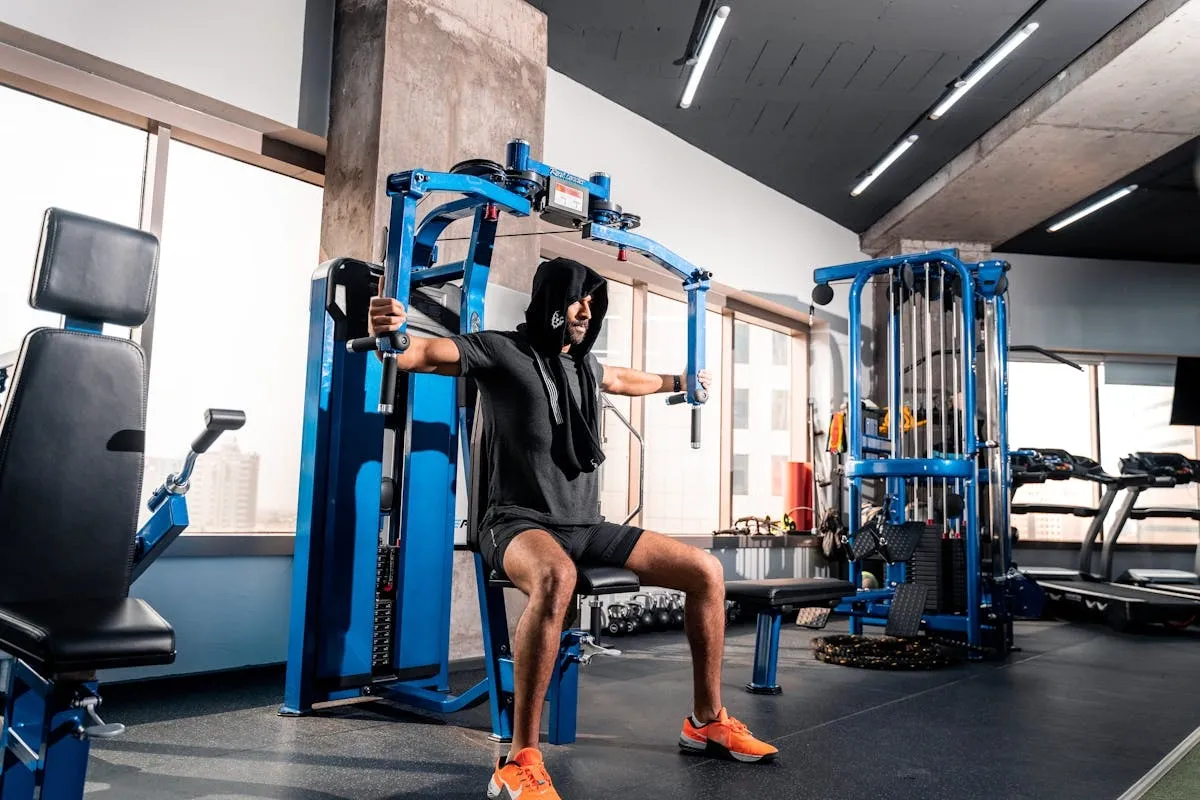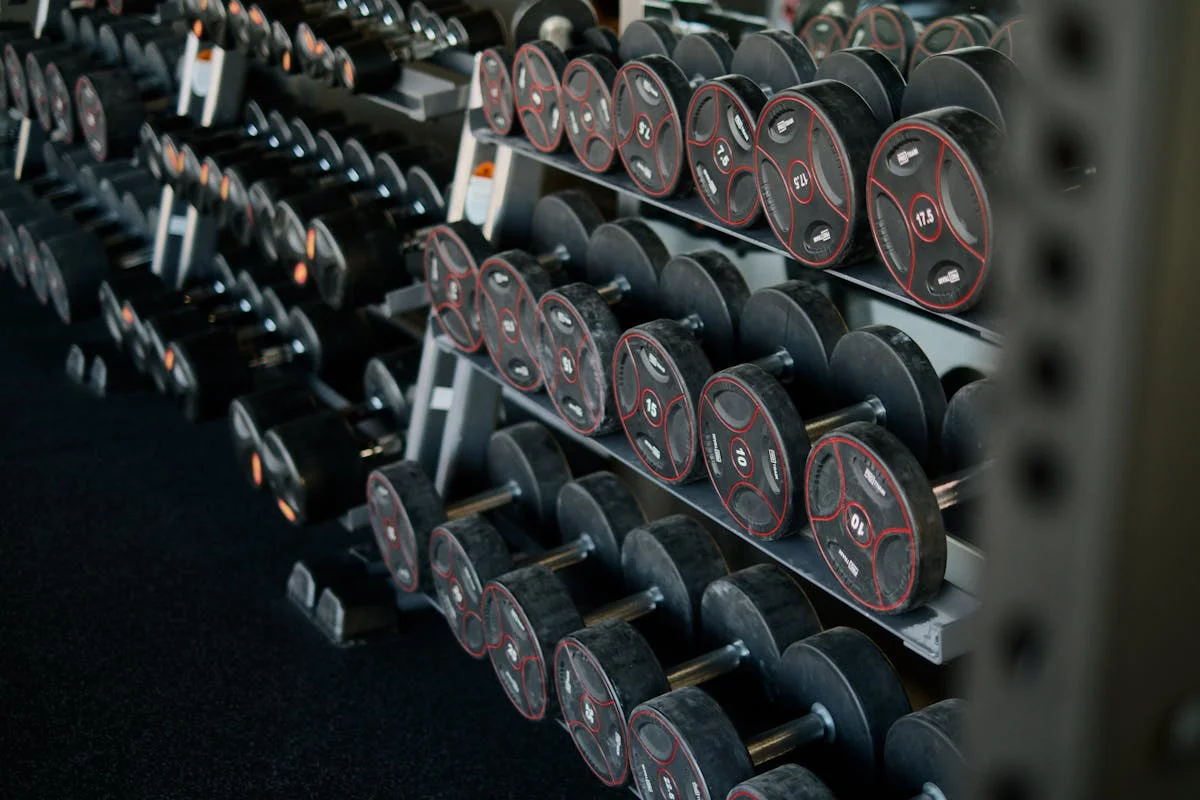
Do you want a chest that stands out and gets noticed? Whether you’re new to the gym or have been lifting for years, the chest fly machine can help you achieve those impressive pecs. Chest workouts are vital for building strength, improving posture, and enhancing your upper body look. This guide will cover everything you need to know about the chest fly machine and how it can transform your chest workouts.
What is the Chest Fly Machine?
Description and Mechanics
The chest fly machine, also called the pec deck, is a popular piece of gym equipment designed to target your chest muscles. It usually features a seat, a backrest, and two lever arms that you bring together in a motion resembling a hug.
Variations of the Chest Fly Machine
There are several types of chest fly machines, including the traditional pec deck, cable crossover machines, and adjustable resistance machines. Each type offers unique benefits and targets your chest from different angles.
Benefits of Using the Chest Fly Machine
Muscle Isolation
One of the main advantages of the chest fly machine is its ability to isolate the chest muscles. This helps you focus on your pecs without involving other muscle groups too much.
Enhanced Muscle Activation
By isolating the pectorals, the chest fly machine ensures better muscle activation, which can lead to improved muscle development and chest definition.
Joint-Friendly
The machine’s guided motion provides a controlled environment, reducing the risk of joint strain and injury. This makes it a safer choice for those with shoulder issues.
Muscles Targeted by the Chest Fly Machine
Primary Muscles
The chest fly machine primarily targets the pectoralis major and pectoralis minor, which are responsible for moving your arms and shoulders.
Secondary Muscles
It also engages the anterior deltoids and triceps, which help stabilize and move your arms during the exercise.
How to Correctly Operate the Chest Fly Machine
Setting Up the Machine
Adjust the seat so your feet are flat on the ground and your arms are at shoulder level when you grip the handles. Make sure the backrest supports your back comfortably.
Step-by-Step Guide to Performing Chest Flys
Initial Position
Start with your arms extended out to your sides, maintaining a slight bend in your elbows. Your palms should face forward.
Execution
Slowly bring your arms together in a hugging motion, squeezing your chest at the peak of the movement. Maintain a controlled motion throughout.
Returning to Start
Return to the starting position slowly and controlled, ensuring you do not let the weights crash back into place.
Common Mistakes and How to Avoid Them
Incorrect Arm Position
Keep a slight bend in your elbows to avoid placing unnecessary stress on your joints. Fully extending your arms can lead to hyperextension and injury.
Speed and Control
Perform the exercise slowly and deliberately. Avoid using momentum to complete the movement, as this reduces effectiveness and increases the risk of injury.
Chest Fly Machine vs. Free Weights
Advantages of the Chest Fly Machine
The chest fly machine offers stability and control, making it ideal for beginners and those recovering from injuries. It ensures a consistent range of motion, which is beneficial for muscle growth.
Comparing Results
While free weights offer a greater range of motion and engage stabilizing muscles, the chest fly machine focuses on isolating the pectorals. Incorporating both can lead to well-rounded muscle development.
Integrating the Chest Fly Machine into Your Workout Routine
Beginner Workouts
Start with 2-3 sets of 12-15 repetitions, focusing on proper form and control. Gradually increase the weight and intensity as you become more comfortable.
Intermediate and Advanced Workouts
For those with more experience, incorporate the chest fly machine into a superset or drop set routine to maximize muscle fatigue and growth.
Tips for Maximizing Results with the Chest Fly Machine
Progressive Overload
Gradually increase the weight or number of repetitions to continually challenge your muscles.
Mind-Muscle Connection
Focus on the sensation in your chest muscles during the exercise. Developing a strong mind-muscle connection enhances muscle activation and growth.
Safety Tips for Using the Chest Fly Machine
Listening to Your Body
Pay attention to any discomfort or pain. If something doesn’t feel right, stop the exercise and reassess your form and technique.
Chest Fly Machine for Different Fitness Goals
Building Mass
To build mass, focus on heavier weights and lower repetitions. Aim for 3-4 sets of 8-10 repetitions with adequate rest between sets.
Sculpting and Toning
For sculpting and toning, use lighter weights with higher repetitions. Perform 3-4 sets of 12-15 repetitions with minimal rest between sets to maintain high intensity.
Complementary Exercises for a Balanced Chest Workout
Bench Press
It’s a great addition to your chest routine.
Push-Ups
They engage multiple muscle groups, including the chest, shoulders, and core.
Dumbbell Flys
Dumbbell flys offer a greater range of motion and help develop chest flexibility and strength. They complement the chest fly machine by providing a different angle of resistance.
Recovery and Rest
Importance of Recovery
Allowing your muscles time to recover is crucial for growth and injury prevention. Ensure you have rest days between intense chest workouts.
Best Practices for Rest Days
On rest days, focus on light activities like stretching, yoga, or walking. This promotes blood flow and muscle recovery without overexertion.
Conclusion
The chest fly machine is a powerful tool for enhancing your chest workout routine. By incorporating it into your fitness plan, you can achieve better muscle isolation, enhanced activation, and safer training sessions. Focus on proper form, gradually increase intensity, and combine it with complementary exercises for the best results. Start incorporating chest flys today and see the difference!








